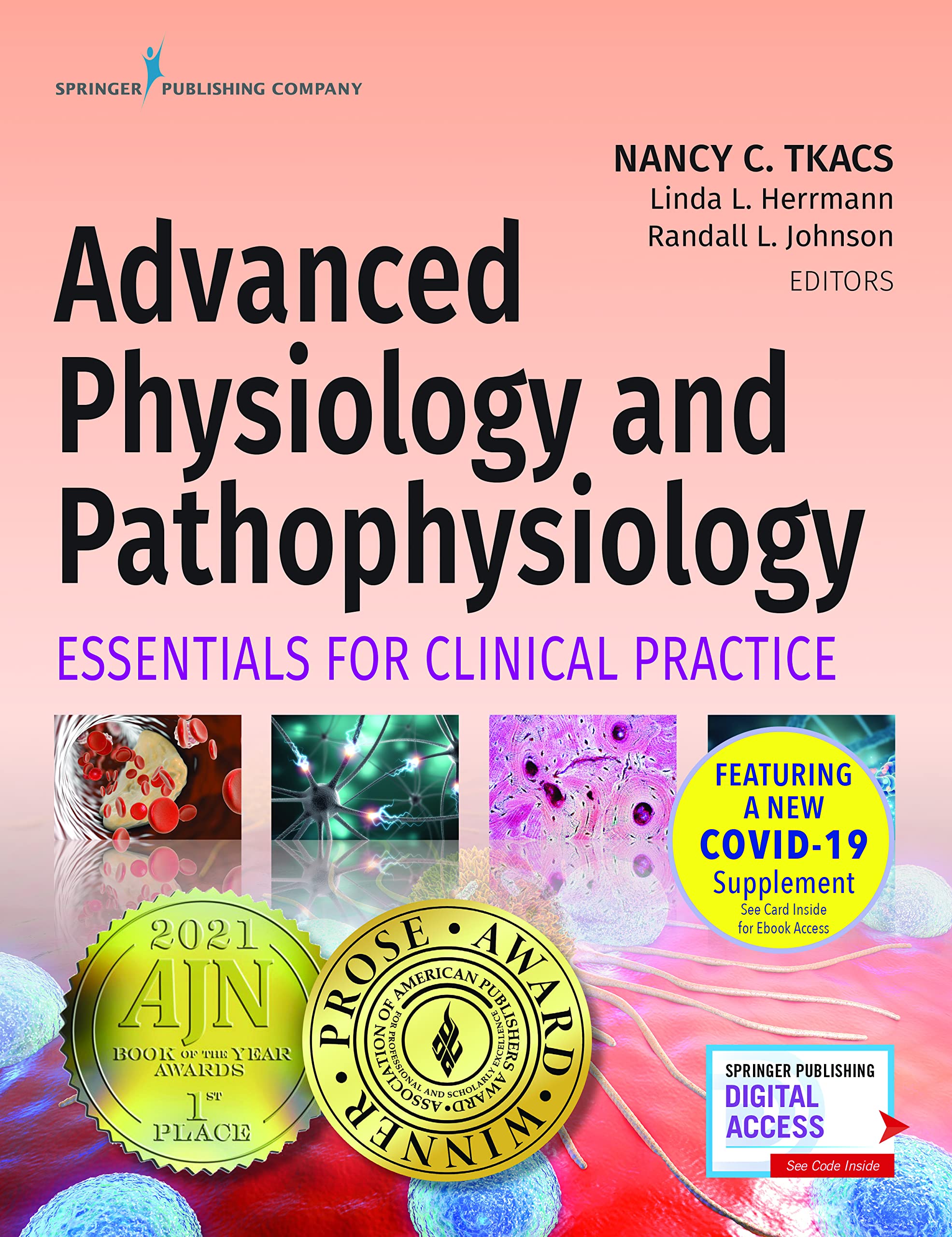Advanced Physiology and Pathophysiology Essentials for Clinical Practice 1st Edition Test Bank
Digital item No Waiting Time Instant DownloadChapters: 17Format: PDFISBN-13: 978-0826177070ISBN-10: 0826177077Publisher: Springer Publishing CompanyAuthors: Nancy Tkacs , Linda Herrmann, Randall Johnson
In Stock
Original price was: $55.00.$19.00Current price is: $19.00.
Advanced Physiology and Pathophysiology Essentials for Clinical Practice 1st Edition Test Bank
Advanced Physiology and Pathophysiology: Essentials for Clinical Practice, 1st Edition – Test Bank
Overview: The “Advanced Physiology and Pathophysiology: Essentials for Clinical Practice, 1st Edition” is an authoritative resource tailored for advanced practice nursing students and healthcare professionals. Authored by Nancy C. Tkacs, this textbook provides an in-depth exploration of human physiology and pathophysiology, with a strong focus on clinical applications. The accompanying test bank is designed to assess the student’s comprehension of complex physiological concepts and their ability to apply this knowledge in clinical scenarios.
Key Features:
- Comprehensive Coverage of Physiology and Pathophysiology:
- The test bank encompasses all critical aspects of advanced physiology and pathophysiology, including cellular function, organ systems, and the mechanisms of disease. It ensures that students have a thorough understanding of how the body functions in health and how alterations can lead to disease.
- Focus on Clinical Application:
- Many questions are centered around the clinical application of physiological and pathophysiological concepts. This focus helps students and practitioners translate theoretical knowledge into practical skills that can be used in patient care.
- Diverse Question Formats:
- The test bank includes a variety of question types such as multiple-choice, true/false, fill-in-the-blank, and case-based scenarios. This variety caters to different learning styles and allows for the assessment of both foundational knowledge and higher-order thinking.
- Case-Based Scenarios:
- The inclusion of case studies and real-world clinical scenarios in the test bank helps students apply their knowledge to practical situations. These questions are particularly valuable for developing critical thinking skills and for preparing students for the types of questions they might encounter in clinical practice or certification exams.
- Critical Thinking Emphasis:
- Questions are designed not only to test factual knowledge but also to encourage critical thinking. Students are often required to analyze clinical data, make diagnoses, and determine appropriate interventions based on their understanding of physiology and pathophysiology.
- Alignment with Learning Objectives:
- Each question is closely aligned with the textbook’s learning objectives, ensuring that assessments are relevant and comprehensive. This alignment helps students focus their study efforts on the most important concepts and ensures a thorough understanding of the material.
- Preparation for Advanced Practice:
- The test bank is particularly valuable for those preparing for advanced practice roles, such as nurse practitioners or physician assistants. The questions are designed to reflect the depth of knowledge required for these roles, focusing on complex clinical decision-making.
Content Breakdown:
- Cellular Physiology:
- The test bank includes questions on cellular functions, such as membrane transport, cell signaling, and cellular metabolism. These foundational concepts are critical for understanding more complex physiological processes.
- Nervous System:
- Questions assess students’ knowledge of the central and peripheral nervous systems, including neurotransmission, neurophysiology, and the pathophysiology of neurological disorders.
- Cardiovascular System:
- The test bank covers the physiology of the heart and blood vessels, as well as the pathophysiology of cardiovascular diseases such as hypertension, heart failure, and atherosclerosis.
- Respiratory System:
- Students are tested on the mechanics of breathing, gas exchange, and the regulation of respiration, along with the pathophysiology of respiratory conditions like asthma, COPD, and ARDS.
- Renal System:
- Questions focus on kidney function, fluid and electrolyte balance, and the pathophysiology of renal diseases such as acute kidney injury and chronic kidney disease.
- Endocrine System:
- The test bank includes questions on hormone regulation, the physiology of endocrine glands, and the pathophysiology of endocrine disorders like diabetes and thyroid dysfunction.
- Gastrointestinal System:
- Students are tested on the digestion, absorption, and metabolism of nutrients, as well as the pathophysiology of GI diseases such as inflammatory bowel disease and liver disorders.
- Musculoskeletal System:
- Questions assess knowledge of bone and muscle physiology, along with the pathophysiology of musculoskeletal conditions like osteoporosis and arthritis.
- Immune System:
- The test bank covers the physiology of the immune response, including innate and adaptive immunity, as well as the pathophysiology of immune-related disorders such as autoimmune diseases and allergies.
- Reproductive System:
- Questions focus on the physiology of the male and female reproductive systems, along with the pathophysiology of reproductive disorders such as infertility and hormonal imbalances.
Practical Applications:
- For Advanced Practice Students:
- The test bank is an invaluable tool for students in advanced practice programs, helping them to solidify their understanding of complex physiological and pathophysiological concepts and apply this knowledge in clinical settings.
- For Educators:
- Instructors can use the test bank to create customized exams and quizzes that are aligned with course objectives. The variety of question types allows for comprehensive assessment of student knowledge and skills.
- For Practicing Clinicians:
- Practicing clinicians can use the test bank to refresh their knowledge of advanced physiology and pathophysiology, particularly when preparing for certification exams or when transitioning to a new clinical specialty.
Conclusion:
The test bank for “Advanced Physiology and Pathophysiology: Essentials for Clinical Practice, 1st Edition” is an essential resource for advanced practice nursing students, educators, and clinicians. It provides a comprehensive and clinically relevant assessment of students’ knowledge, helping to ensure that they are well-prepared for advanced practice roles. The focus on critical thinking and clinical application makes this test bank a valuable tool for developing the skills necessary to excel in the complex and ever-evolving field of healthcare.


Reviews
There are no reviews yet.